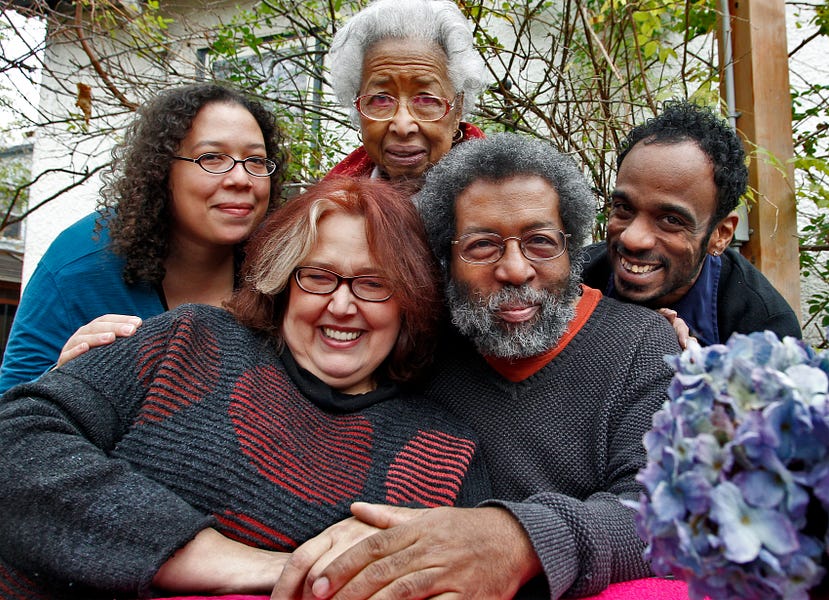In his autobiography, Life on the Color Line, Gregory Williams tells the story of discovering at the age of 10 that he was black—or at least that the world saw him that way.
Williams, who would go on to serve as president of both City College of New York and the University of Cincinnati, was raised as a white boy when and where it really mattered: rural, central Virginia in the late 1940s and early 1950s. But when his parents’ marriage broke up and his mom ran off, his no-account, alcoholic father could not manage to care for his two sons. So, Williams’ dad moved them to his hometown of Muncie, Indiana. It was on the bus trip there that Williams’ dad told his boys that he was not the Italian-American called “Tony” who ran a roadhouse west of Richmond but a light-skinned black man from the wrong side of tracks in the industrial Midwest. “Miss Sallie,” the black woman who had worked at the family bar for a time, was really the boys’ grandmother.
Ultimately abandoned by both of his parents, Williams found himself brutally rejected by both cultures. And what a time to live on that line. In 1954, the year after he arrived in Muncie, the Supreme Court struck down school segregation laws. Segregationists had warned after Harry Truman integrated the military six years earlier that the federal government was intent on the mixing of the races—and ultimately making intermarriage appear to be normal, leading to the dilution of the white race. The blending of children in classrooms was to them just the next step in the demise of America’s dominant white culture by miscegenation. Williams remembered a Klansman on television saying the court was trying to encourage race mixing and the rise of the “bestial mongrel mulatto, the dreg of human society.”
“He was talking about me. I was the Klan’s worst nightmare,” Williams recalled. “I was what the violence directed against integration was all about. I was what they hated and wanted to destroy.”
Indeed, since before the first federal naturalization law in 1790 opened citizenship “to any alien being a free white person” who had lived in the United States for at least two years, the legal question of whiteness had been a matter of intense conflict. Eighty years, a civil war, and three constitutional amendments later, Congress allowed that “aliens of African nativity and to persons of African descent” were indeed eligible to become citizens along with whites. In the coming years, that would be clarified to mean not people of Chinese ancestry, but at the start of the 20th century, confusion still raged over what it meant to be “white.” The result was more than 5,000 decisions by courts at various levels determining what constituted whiteness. In one place, people of Syrian or Lebanese ancestry could be considered white; in another they could not. One court might deem a person of Mexican origin deserving of full legal status, another might deem a person of the same ancestry an indigenous race of another country to be rejected.
Not helping matters was the concurrent rise of eugenics, the popular, progressive scientific fad of the day that promised to eliminate the ills of mankind by identifying and isolating different racial groups. But was a Sicilian with lots of Nubian ancestry “white” or African? Spaniards of some Moorish origin? Jews? What about the Japanese, who Teddy Roosevelt said were the whites of Asia? A nation that had been founded and predominantly settled by white Protestants of Northern European origin found itself contending with the challenge of immigrants pouring in from across a rapidly shrinking globe. At the same time, new geographic and economic mobility for blacks started putting to the test those promises of the post-Civil War era. From Ellis Island to the neighborhoods of the rising black middle class in cities coast to coast, the idea of “the white race” was falling apart. Science said that “one drop” of non-white blood excluded a person from that club, but experience taught Americans that life was far more complicated.
Indeed, the violence and hatred at the end of Jim Crow is best understood as the death spasm of that old way of thinking. The bigots who warned that desegregation would lead to the mixing of races and the end of their understanding of whiteness were quite right. The problem for them was that in the span of just a generation or two, folks just didn’t seem to care. Gregory Williams was born to parents whose marriage would have been illegal in the Virginia of his youth. He didn’t care, and neither did his white wife—his high school sweetheart from Muncie. Her parents disowned her for race mixing, but that didn’t stop them from having four mixed-race children over a marriage spanning decades. But still today, bigots and the progressive proponents of race science hold fast to the idea of fixed, measurable race and ethnicity.
Demographer Richard Alba explores the phenomenon of mixing in his new book, The Great Demographic Illusion: Majority, Minority and the Expanding American Mainstream. Alba explains how the efforts to slice America into thinner and thinner demographic slices has missed the real story: Americans are intermarrying and producing multi-ethnic children at greater and greater rates. While the Census Bureau and professors of critical race theory are trying to salvage ideas about race from a century ago, Americans are going about their business. That means loving whomever they choose. One in five marriages are now between different racial groups. The children of mixed-race marriages take increasingly flexible views on their own racial identity. The results of the 2020 census will surely reveal that the trend is only accelerating. What else would you expect from a country where the first non-white president was half white?
White America is not getting “replaced” and black and brown Americans are not being isolated under the strictures of a new Jim Crow. Instead, we are doing what we have always done: making ourselves new. And thank God for that.







Please note that we at The Dispatch hold ourselves, our work, and our commenters to a higher standard than other places on the internet. We welcome comments that foster genuine debate or discussion—including comments critical of us or our work—but responses that include ad hominem attacks on fellow Dispatch members or are intended to stoke fear and anger may be moderated.
With your membership, you only have the ability to comment on The Morning Dispatch articles. Consider upgrading to join the conversation everywhere.